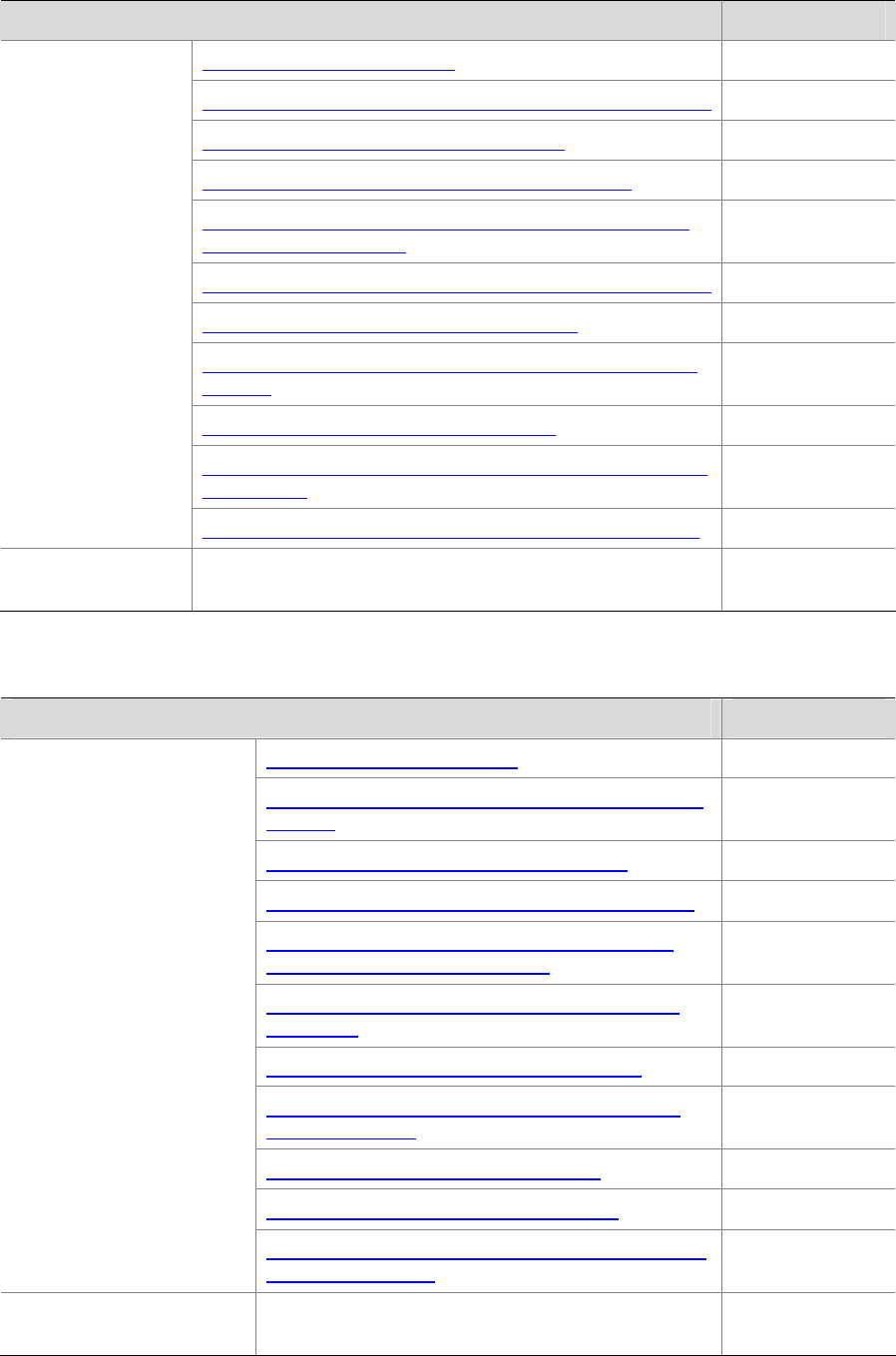
2-9
Task Remarks
Creating a RADIUS Scheme Required
Configuring RADIUS Authentication/Authorization Servers Required
Configuring RADIUS Accounting Servers Required
Configuring Shared Keys for RADIUS Messages Optional
Configuring the Maximum Number of RADIUS Request
Transmission Attempts
Optional
Configuring the Type of RADIUS Servers to be Supported Optional
Configuring the Status of RADIUS Servers Optional
Configuring the Attributes of Data to be Sent to RADIUS
Servers
Optional
Configuring Timers for RADIUS Servers Optional
Enabling Sending Trap Message when a RADIUS Server
Goes Down
Optional
Configuring the
RADIUS client
Enabling the User Re-Authentication at Restart Function Optional
Configuring the
RADIUS server
Refer to the configuration of the RADIUS Server.
—
Complete the following tasks to configure RADIUS (the switch functions as a local RADIUS server):
Task Remarks
Creating a RADIUS Scheme Required
Configuring RADIUS Authentication/Authorization
Servers
Required
Configuring RADIUS Accounting Servers Required
Configuring Shared Keys for RADIUS Messages Optional
Configuring the Maximum Number of RADIUS
Request Transmission Attempts
Optional
Configuring the Type of RADIUS Servers to be
Supported
Optional
Configuring the Status of RADIUS Servers Optional
Configuring the Attributes of Data to be Sent to
RADIUS Servers
Optional
Configuring the Local RADIUS Server Required
Configuring Timers for RADIUS Servers Optional
Configuring the RADIUS
server
Enabling Sending Trap Message when a RADIUS
Server Goes Down
Optional
Configuring the RADIUS
client
Refer to the configuration of the RADIUS client
—
The RADIUS service configuration is performed on a RADIUS scheme basis. In an actual network
environment, you can either use a single RADIUS server or two RADIUS servers (primary and
secondary servers with the same configuration but different IP addresses) in a RADIUS scheme. After


















